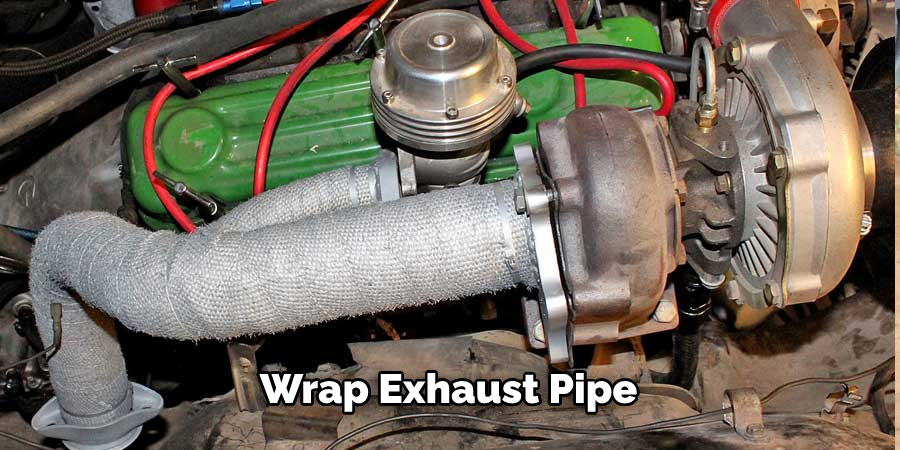If your exhaust pipe is damaged and can’t weld it, don’t worry! There are a few ways to fix it without welding. This article will discuss the methods you can use and their pros and cons. We will also show you how to fix exhaust pipe without welding.
So, whether you have a broken exhaust pipe or just want to perform some preventative maintenance, keep reading for more information. Each has its own set of pros and cons, so be sure to choose the method that best suits your needs.
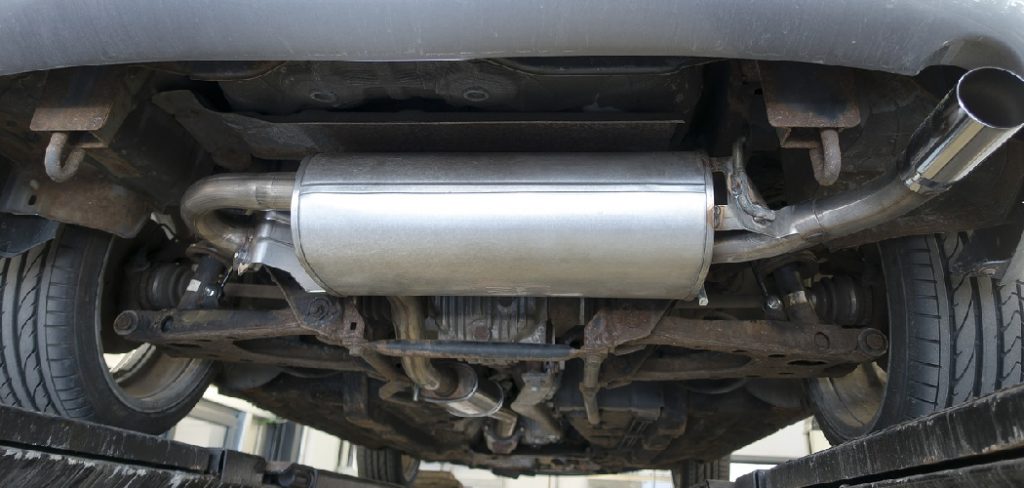
Summary: Fixing an exhaust pipe without welding is possible, and it can be done with the help of a few different materials. The first step is to measure the size of the exhaust pipe and purchase a patch or repair kit that fits properly. If purchasing a patch kit, make sure to get one that has an adhesive backing for easy installation.
Next, the area around the hole should be cleaned and dried thoroughly before applying the patch or repair the sleeve. Once applied, it should be secured firmly with clamps and screws so that it does not come loose over time. Finally, after everything is secure and dry, test the repair by running the engine for a few minutes before putting your vehicle back on the road.
12 Easy Ways on How to Fix Exhaust Pipe Without Welding:
1. Clamp
The exhaust pipe is not connected to anything strong enough to be clamped down onto. If you have a clamp, use it and tighten it around the weakly held end of the exhaust pipe, and hopefully, that will fix your problem.
If you can’t find a clamp, you can use a screwdriver to tighten the exhaust pipe. If you don’t have a screwdriver, you can use your hand.
2. Crimp Bending
If clamping does not fix your problem, take a pair of pliers and pull apart one side of the exhaust pipe. Then, hold the open side of the exhaust pipe and bend it to be level and straight.
If you want to fix your exhaust pipe, you need to first pull it apart. Then, hold one side and bend it until it is level and straight. If the pipe won’t stay in its new form, use tape or electrical tape to keep it together.
3. Clean the Surface With Acetone
If you have some acetone lying around, pour it over the surface of your exhaust pipe that
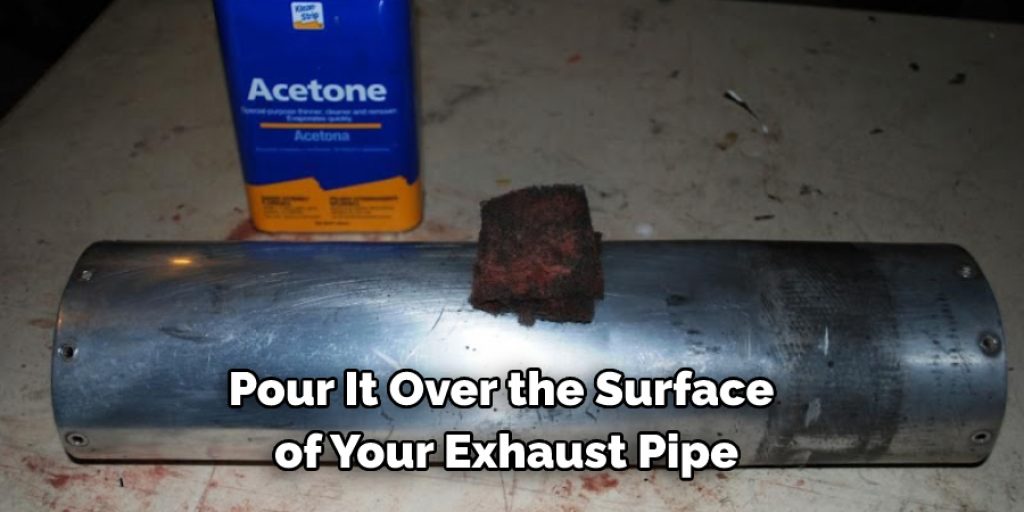
You need to fix your exhaust pipe. If you don’t have any acetone, you can burn off the excess oil or dirt with a lighter. Then, polish the surface with a cloth until it shines.
4. Coat It With Thread Locker
If you want to keep your exhaust pipe together, you can use disc brake thread locker. This is a material that helps things stay together tightly, either under pressure or heat. Just make sure to clean the surface first before you use it.
5. Plunger Gasket
Grabbing the plunger gasket if there are no clamps or screwdriver’s insight. Place it on one side of your exhaust pipe where you want to fix it, and hammer it flat against the other side. Test the connection for water tightness by placing a funnel in the drain and pouring a small amount of water into it. If water does not seep through, your gasket is set correctly.
Replace the plunger on the drain to hold the gasket in place.
If you do not have a plunger gasket, then grab your trusty screwdriver or pliers if you used them before and hold the two opposing ends together until they snap into place.
6. Repair the Split with Some Tape
If you have some electrical tape, duct tape, or plumber’s tape laying around, use it to patch up
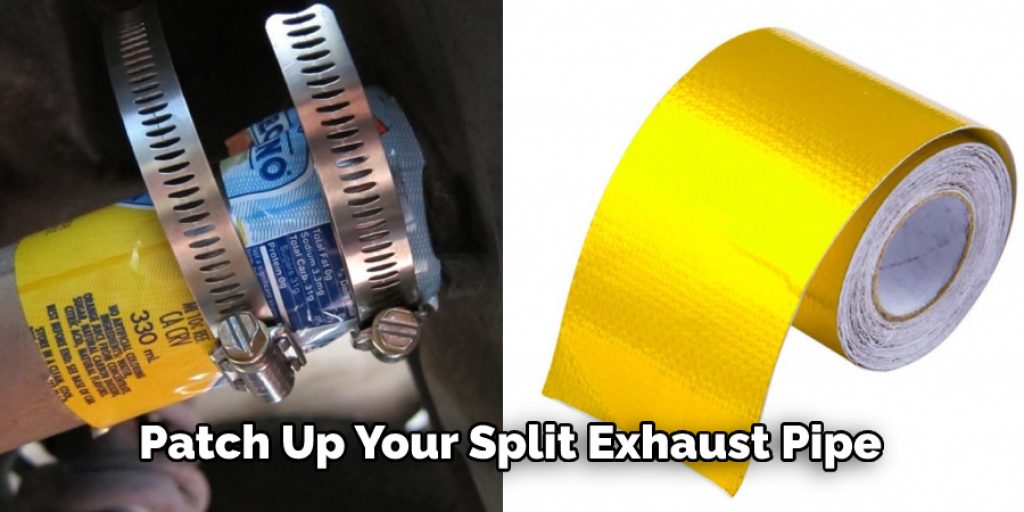
your split exhaust pipe and hold it together. If you do not have any tape, use your teeth to hold the two opposing ends of the pipe together while applying pressure to them with your fingers until they snap into place.
7. Exhaust Putty
If none of the previous solutions has worked, then it is time to turn to exhaust putty. Spread some on your split end or against either side of your weakly clamped end until fully covered it with this epoxy-like substance. If that does not work, get some super glue and apply a minuscule drop to either side of your split end. Press together firmly and hold in place until the glue has set.
8. Get a Flex Pipe
If you do not have the money to purchase a new exhaust pipe, then fear not. Get a flex pipe instead and use it as if it were an exhaust pipe. Wrap electrical tape around both ends of it until they are completely covered in this strong adhesive material. You now have an improvised version of the otherwise expensive material used for fixing cars.
9. Weld It With a Mig Welder
Get your mig welder out and weld the broken pieces together if you are good at welding. Heat up one side of the split exhaust pipe with the metal wire sticking out of it until it is red hot, then press down firmly on the other side to join them together. If you are not good at welding or do not want to purchase a mig welder, you can assume that you are one of the 80% of people who should not attempt to use this dangerous machine.
10. Coat It With Silicone
Grab some silicone and apply it to the split pipe in a thick layer with a paintbrush. Let this
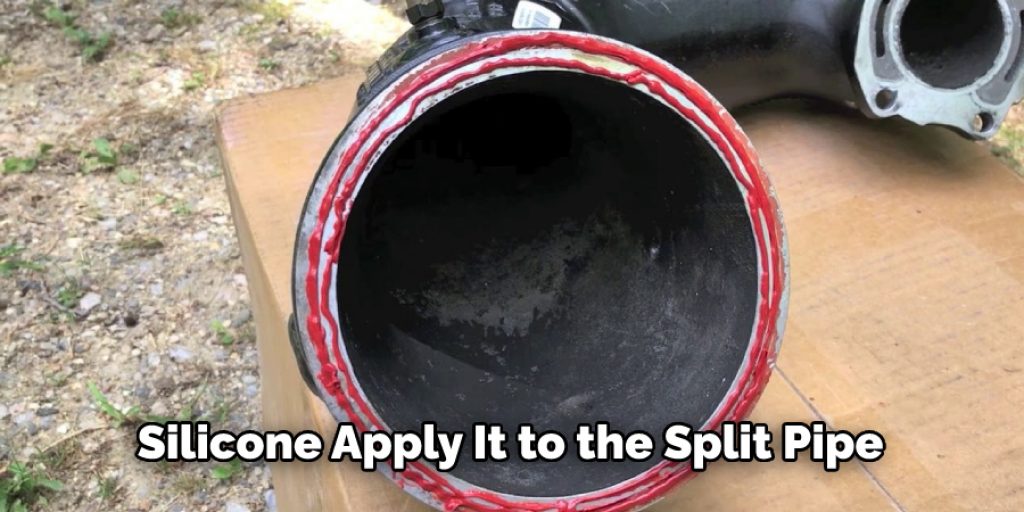
substance dry thoroughly before using your exhaust system again with a car or other vehicle that runs on gasoline.
11. Apply Epoxy and Clamps
Grab your epoxy and spread a thick layer over the split end of your exhaust pipe. Press clamps against both sides until they click into place, and leave them there for as long as the instructions on the epoxy suggest. While you wait, read through this article once more to ensure that you have not missed anything crucial in your attempt to heal your exhaust pipe magically.
12. Repair It With Metal Mesh
If you do not have any epoxy or clamps, use metal mesh instead. Cut it into two-inch by one-inch strips and bend them to form a circular shape when connected along the perimeter of one side of your flat exhaust pipe. You now have an improvised clamp that is stronger than most clamps available on the market today, and you will not need to go out and purchase one!
You Can Check It Out To Fix a Catalytic Converter Without Replacing It
Some Tips and Suggestions
Here we have given tips on how to fix exhaust pipe without welding.
- Make sure you have the right tools; it will save time and effort.
- Before you do anything, clean out your exhaust pipe with a wire brush or sandpaper to remove rust or flaky paint.
- Be prepared for the possibility of having to purchase new pieces to finish up your job.
- Use WD40 or a similar product to help your steel wool attach to the pipe.
- If you can, cut off a broken piece of pipe before attempting to reattach it. This will save you time/effort fixing a new piece or trying to reinforce an old one.
- Make sure the steel wool is wrapped tightly and securely around the pipe.
- Wrap as much as you can, as it will strengthen your bond
- Don’t leave large gaps between pieces of steel wool to try and save time/effort because that will weaken the points where the pieces attach.
What Causes Exhaust Pipe Leaks In Vehicles?
The main cause of an exhaust pipe leak in the vehicle is fatigue or corrosion caused by rust. Exhaust system problems are common in older vehicles. When rust accumulates in the exhaust pipes, it creates small holes or cracks in the metal, causing a leak to need to be repaired.
Exhaust system leaks are not always visible, but if there is a broken or loose part that connects to the exhaust system, you can listen to it with an automotive stethoscope. If the vehicle has more than one exhaust pipe, you will have to refer to your car’s manual for further instructions on locating the leak.
You Can Check It Out to Fix a Clogged Muffler
Troubleshooting the Exhaust Leak
To find out where your exhaust leak is located, it will be necessary for you to inspect the entire length of the exhaust pipe with a flashlight. In addition, you will have to disassemble the exhaust system to get a better look at your leak. The exhaust can be found on most cars and trucks, both old and new.
A small crack may sometimes appear if your muffler or catalytic converter is rusting from years of use. If that’s the case, then you will need to replace the bad part. However, if it is not rust, then you may have a hole in your exhaust pipe that can be fixed without welding if you follow the instructions mentioned on how to fix exhaust pipe without welding.
How Long Does It Take to Fix Pipe Without Welding?
It takes about an hour to fix a pipe without welding, but it depends on the pipe’s size. It could take a few hours for a larger pipe, or a much shorter time for a smaller one. It is best to fix your exhaust as soon as you notice a problem with it. Because fixing an exhaust can be quite dirty and frustrating, the job may take several hours if you wait too long, depending on how long you have been neglecting it.
Does Exhaust Leak Hurt Engine?
An exhaust leak can cause serious problems if not repaired promptly. It is essential to get it fixed quickly because the oxygen sensors are very sensitive, which will throw off your check engine light code. If you do not take care of the problem quickly enough, internal damage to the engine could cost more than replacing all gaskets and a new exhaust pipe. This is not a problem that you can weld, but you can learn how to fix exhaust pipes without welding.
Frequently Asked Questions
Can I Temporarily Fix My Exhaust Pipe?
If you are experiencing a loss of exhaust sound when your car is being driven, it may be due to an issue with the muffler. If this is the case, you can try to temporarily fix the muffler by using a temporary sealant. This sealant will help to prevent airflow problems and noise from returning.
Do You Hook Up an Exhaust Without a Welder?
It depends on a variety of factors, including the type of exhaust you are installing and the welding equipment you have access to. In general, though, it is recommended that you consult a welder if you are intending to install an exhaust without using a welding machine. Welders are experts at installing exhausts and can help you avoid any potential complications or accidents.
What Can I Use to Seal My Exhaust Joints?
One of the most common repairs that are performed on exhaust joints is sealing them with a sealant. This prevents moisture and dust from entering the joint, which can cause it to rust and corrode. There are many different types of sealants available in the market today, but some of the most popular include silicone-based sealants, urethane resin-based sealants, and metal-based sealants.
It is important to choose a sealant that is appropriate for your specific application. Silicone-based sealants are often recommended for use on metal surfaces as they have high resistance to water and oil residue. Urethane resin-based seasons work well on both wood or metal substrates, while metal-based seal sands provide long-lasting protection against moisture and corrosion.
Will Exhaust Leak Hurt Engine?
Yes, an exhaust leak can damage the engine. It’s important to have a qualified mechanic inspect your car regularly for any signs of leaks and replace any components that may be damaged as a result. Not only will this prevent major engine trouble down the line, but it could also lead to additional emissions problems.
Is It Ok to Drive With a Broken Exhaust?
As every car and exhaust system is different. That being said, most mechanics agree that driving with a broken exhaust is not a great idea. Here are some reasons why:
- It can cause serious damage to your car – Broken exhausts can cause your car to overheat, go out of control, or even catch on fire. If something like this happens while you’re driving, it could be deadly.
- It can affect your ability to drive safely – Broken exhausts emit toxic gas that can impair your vision and make it difficult to drive safely. Not to mention, the noise they create can be incredibly disruptive and annoying.
- It could lead to fines and penalties – Driving with a broken exhaust is illegal in most states, and if you get caught, you may face fines and/or penalties.
Conclusion
Exhaust pipe repair can be a daunting task, but it’s not impossible. Here we have discussed the steps you need to take on how to fix exhaust pipe without welding. If you have an exhaust leak, it’s important to take care of the problem as soon as possible.
A leaking exhaust system can cause serious damage to your car and may even be illegal in some states. There are several ways to fix an exhaust leak, but welding is often the best option. If you’re not comfortable welding or don’t have access to a welder, other options are available.
The most common way to fix an exhaust leak without welding is by using a patch kit. Patch kits come in different sizes and shapes, so make sure to get one that fits your exhaust system’s hole size. We hope this blog post has been helpful. If you have any questions or want to know more, then feel free to comment below!
You Can Check It Out To Fix a Car Subwoofer With No Sound

